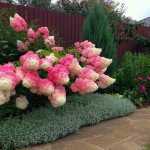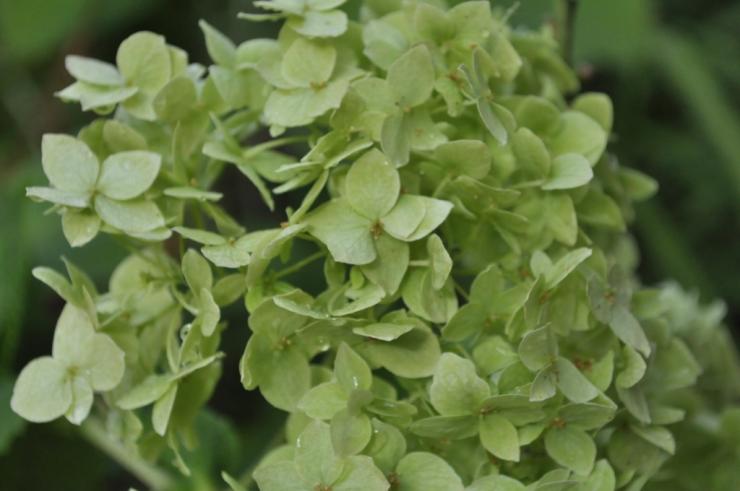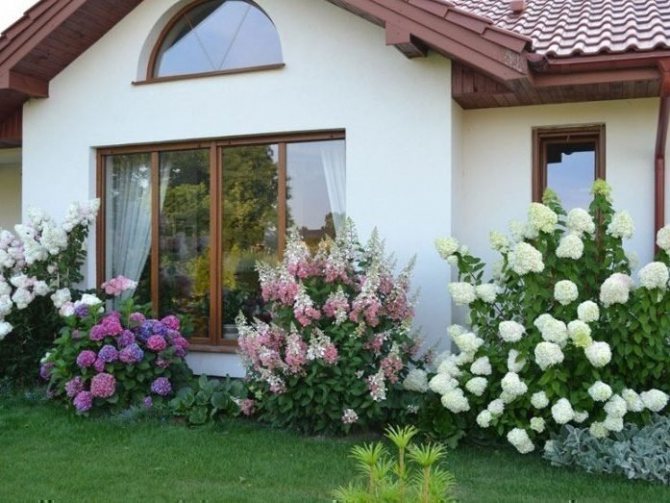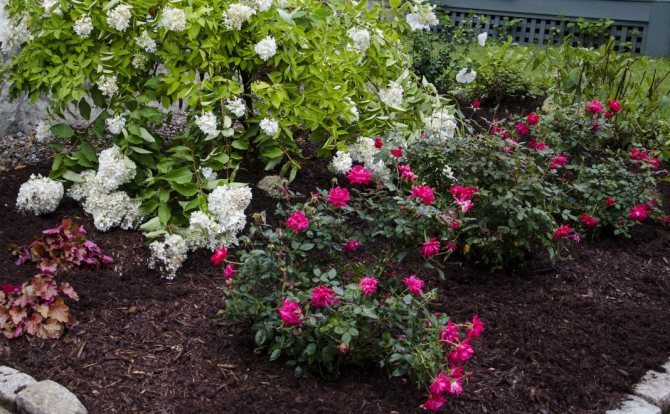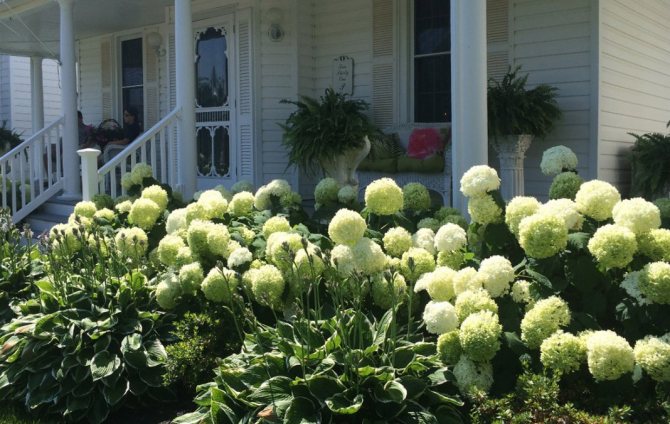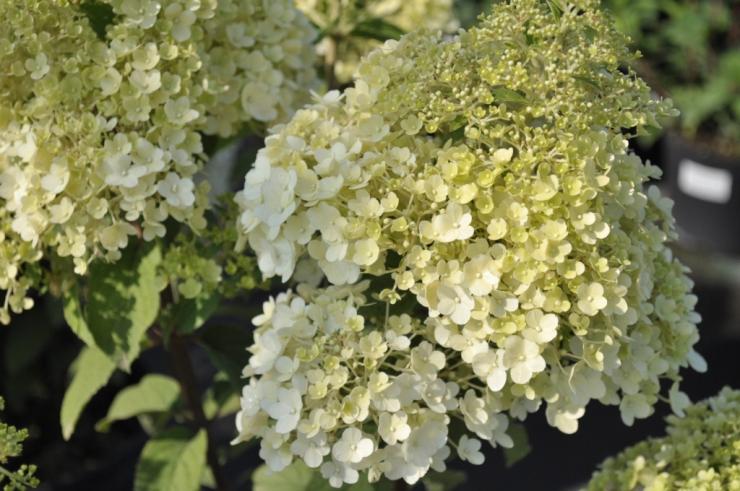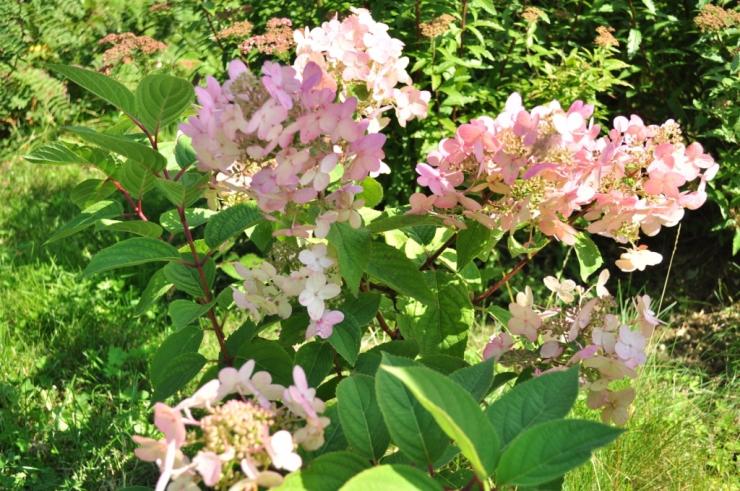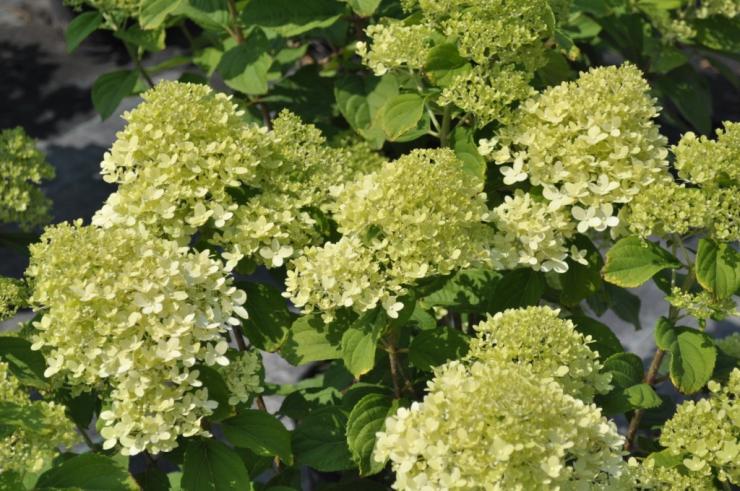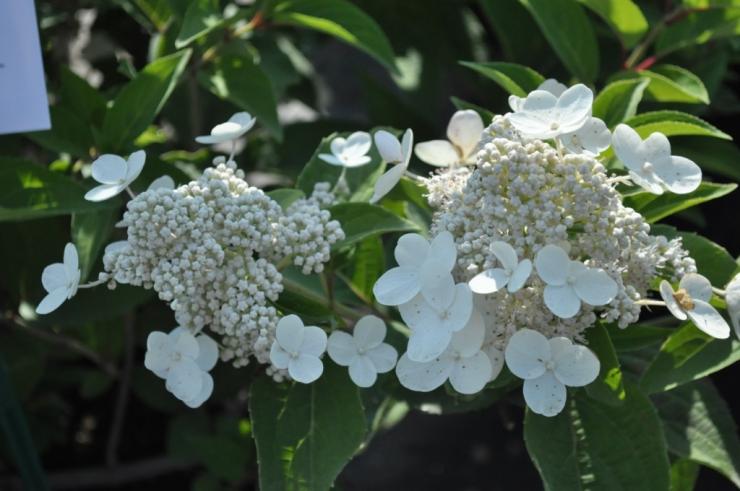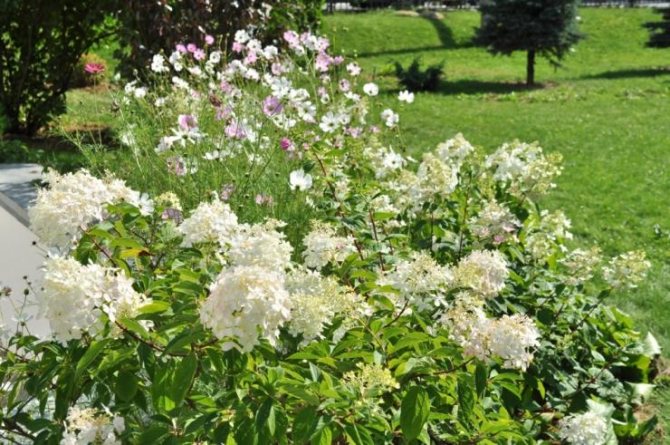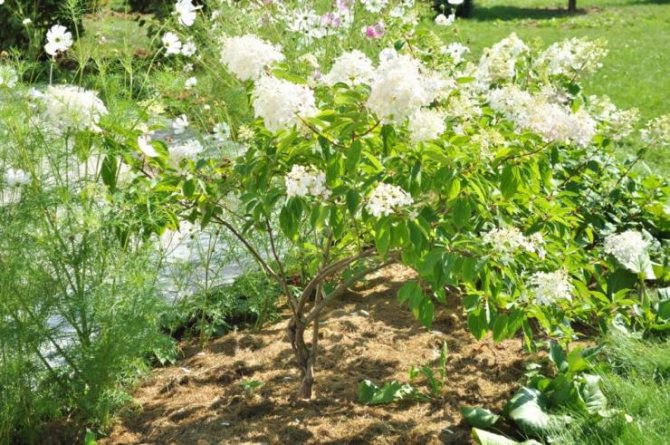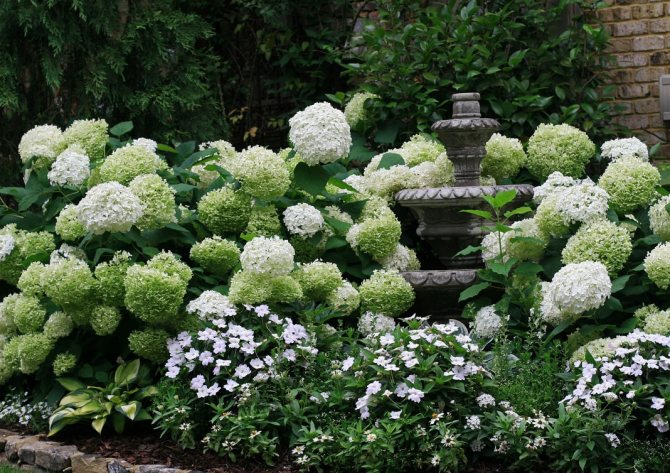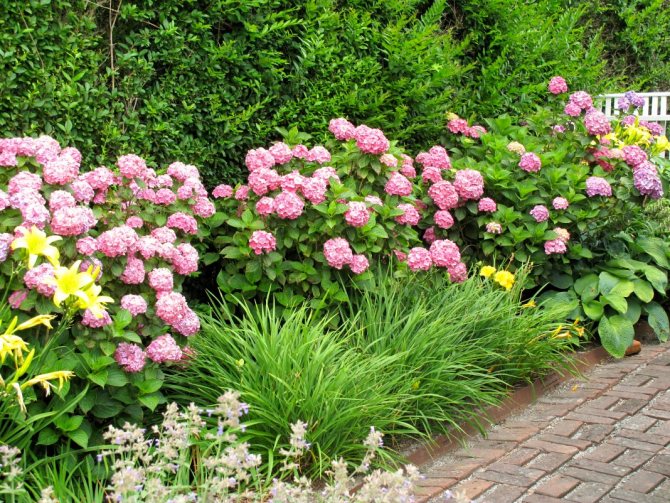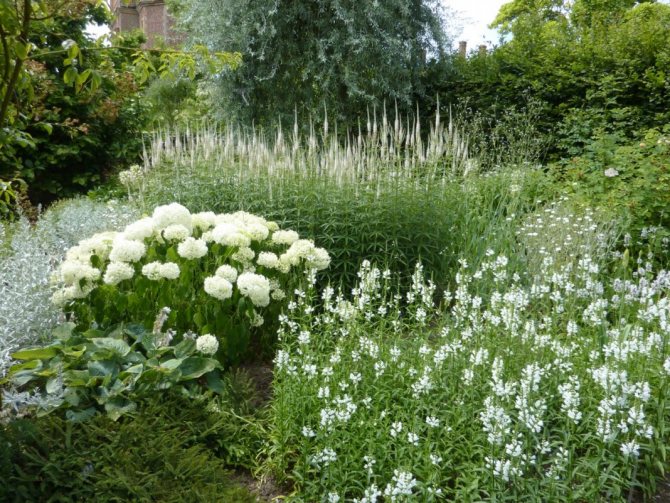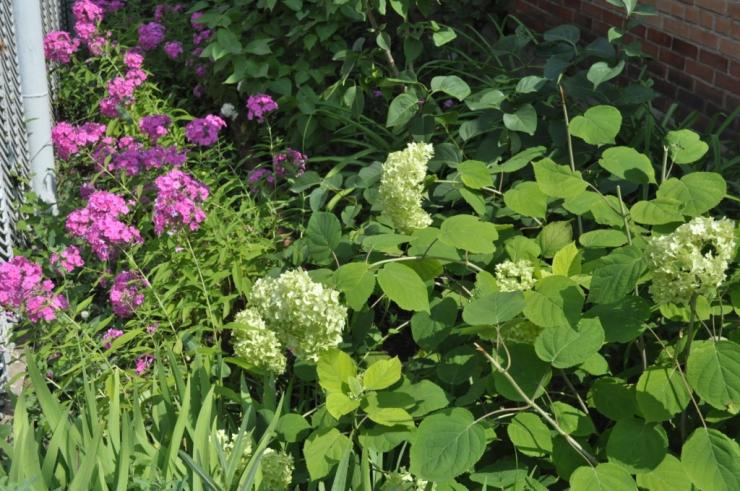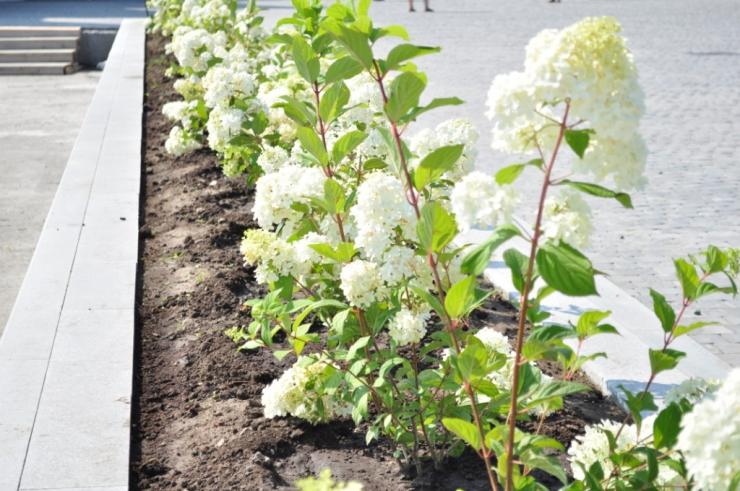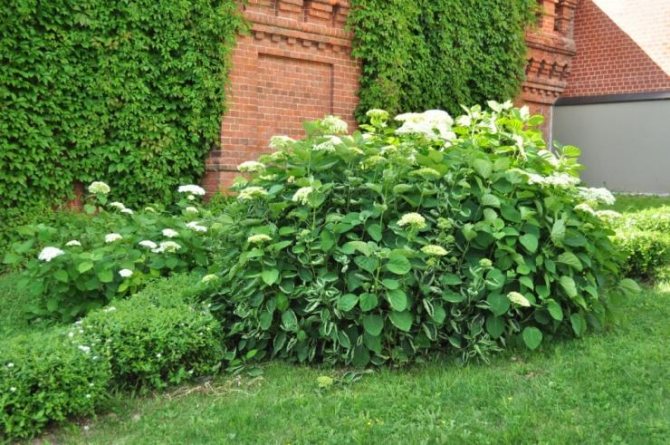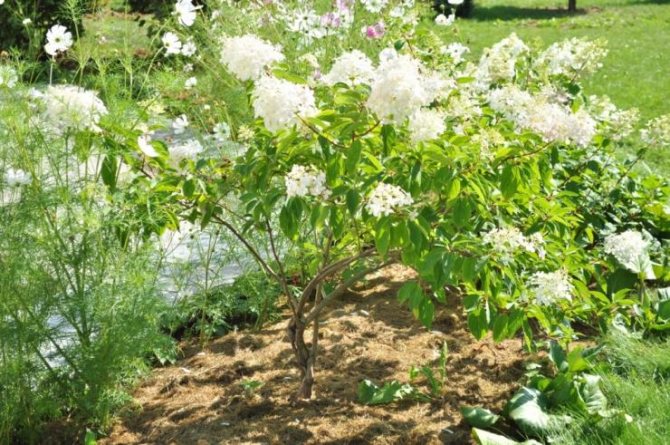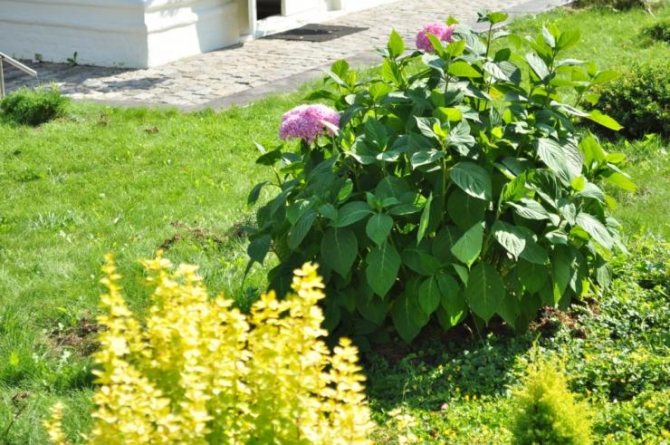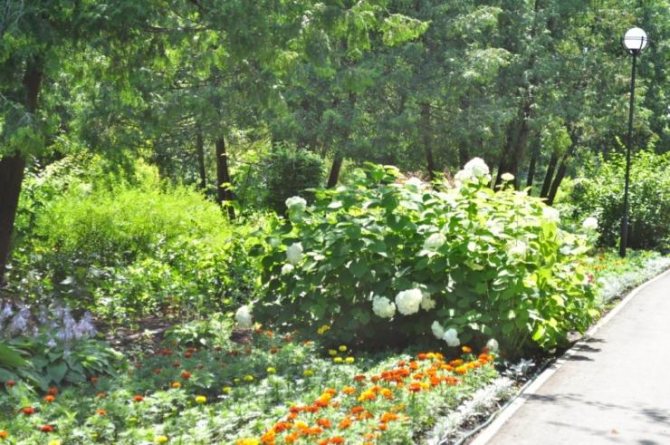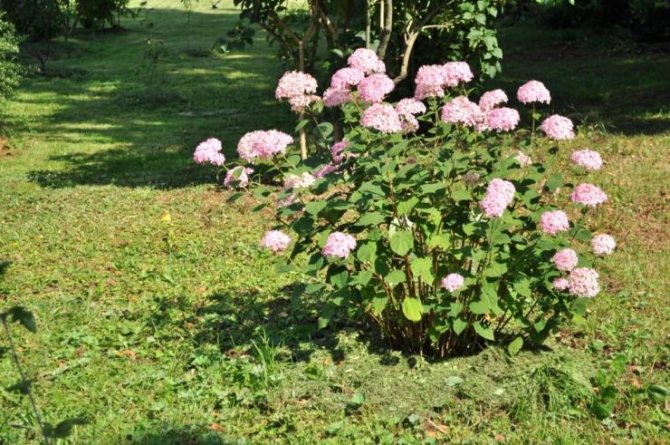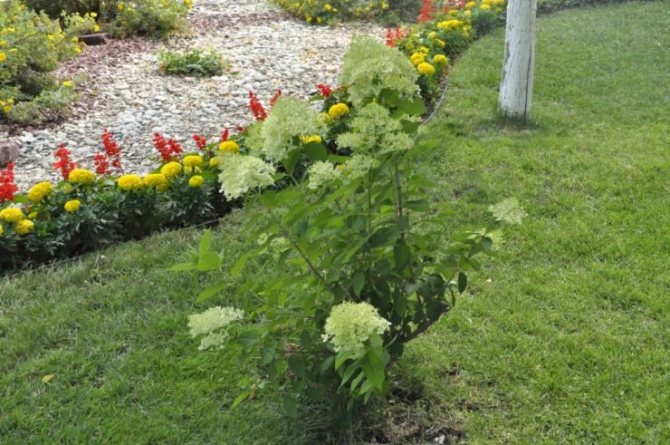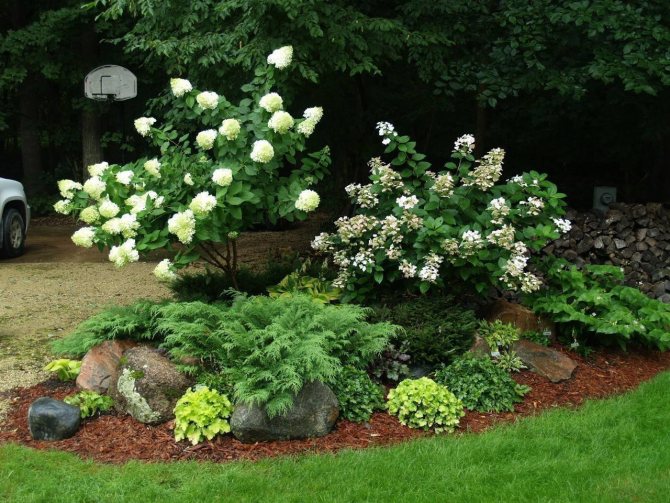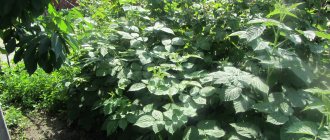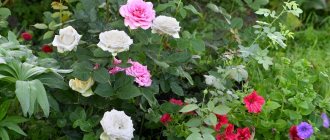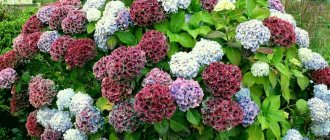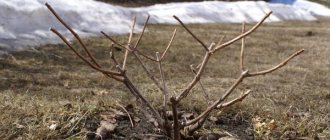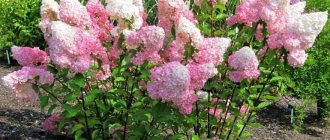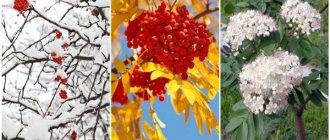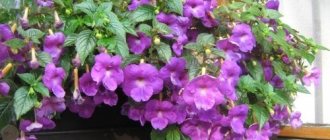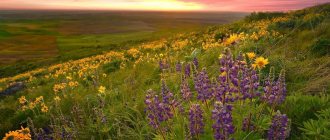The shrub owes its name to a small inflorescence. Native places - the Far East. In the wild, it is found in Japan, China, the Kuril Islands and Sakhalin. The garden form is resistant to negative environmental influences. The height of the shrub rarely reaches 150 cm. The main decoration of panicle hydrangea is a lush inflorescence. Its sizes vary from 25 to 30 cm. Flowers are presented in two types - bisexual and sterile. The latter remain on the branches for a long time, and the former fall off after pollination.
The color shades during the flowering period are from white to cream, the intermediate color is greenish. The velvety soft leaves perform an aesthetic function after all the flowers have fallen off. Their bright color and sharp ends attract attention and give the area an original look. For decorative purposes, the plant can be used in a year, all that is required from the gardener is the creation of favorable conditions. For 12 months it grows up to 20 cm. The plant is unpretentious, frost-resistant. Designers and gardeners are used to decorate and transform country houses and summer cottages.
Use in landscape design
The beauty and unpretentiousness of the plant makes it in demand and popular among designers and gardeners. The shrub perfectly plays the role of a single planting plant and a hedge in a group. Considering the need to constantly replant the plant up to 5 years old, it decorates various parts of the garden. An adult tree gives the site a festive look, and leaves no one indifferent. The plant lends itself well to shearing and modeling. Its appearance depends on the chosen ensemble.
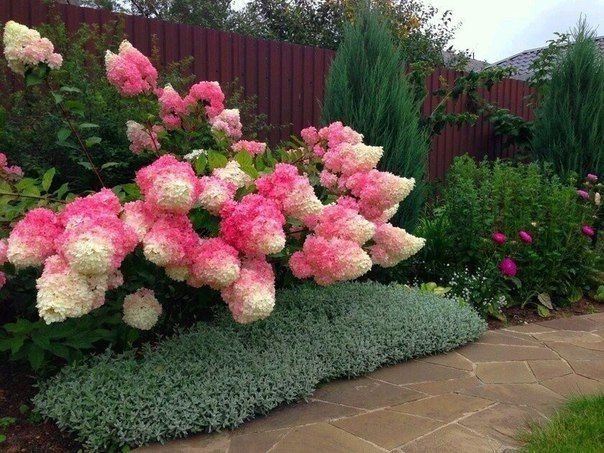
Primarily used in Russian style. When planting a hydrangea with various shrubs and trees, the composition of the soil is taken into account. The plant is its indicator and changes color in response to its composition. The slightly alkaline earth gives a pink color, from a pale shade to a rich one. The acidic soil turns the inflorescences into deep blue. This is due to the lack of iron, which is so necessary for the shrub. By experimenting with the addition of iron salts, gardeners get the desired shade of shrub flowers. A rare exception is the combination of pink and blue flowers on the branches of one hydrangea.
Giving picturesqueness to the garden, shrubs are planted on the banks of natural and artificial reservoirs. Reflecting in the water during flowering, the vibrant colors give the landscape a vibrant and embossed look. The landscape seemed to have come off the canvas of the picture. A large number of hydrangeas will turn any area into a garden of paradise. Flowering occurs later than all popular plants - at the end of summer. This is another reason to plant this miracle. After flowering, the water reflection is decorated with unusual leaves, giving a mysterious and even mystical look to this area of the garden.
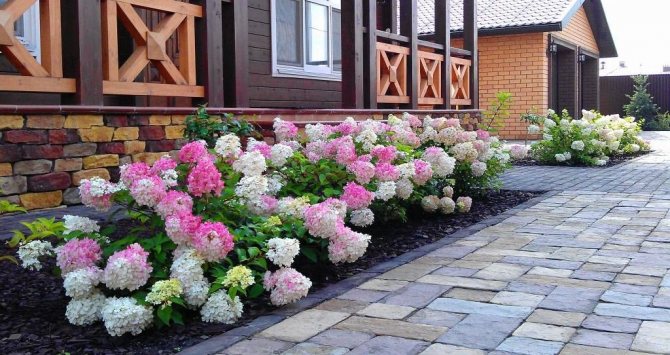

The long-lasting branches of the bush are easy to model. The plant is freely transformed into a flowering ball or brightly colored hedge. It can be created from several varieties of hydrangea, depending on the climatic conditions. The shrub is large enough, harmoniously and integrally looks like a single plant. It is planted on a well-groomed lawn. No less impressive is the combination of hydrangea with other flowering shrubs: bulldonezh, spirea and others. If desired, you can create a flowering meadow or front garden.
Dividing the territory into certain zones, you can safely use a flowering shrub. Carrying out its functional purpose, the hydrangea forms impenetrable hedges and fences. With skillful planting and pruning of the shrub, the plant takes on a given size and shape. The decor of the garden or garden with hydrangea creates a romantic and cozy atmosphere. The hydrangea bloom by the gazebo has a relaxing and pacifying look.
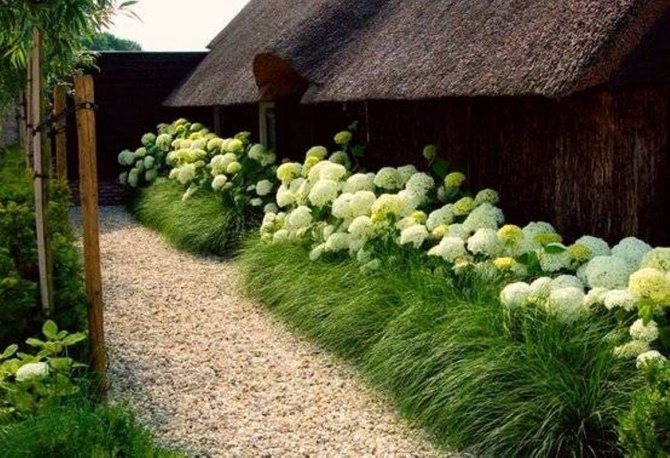

Creating a monochrome English flower garden with hydrangea is as easy as shelling pears. All plants from the composition are selected in the same shade during flowering. The distance between the objects of the ensemble is the same. Another version of the English garden using hydrangeas is a flower bed of geraniums, ornamental grasses and plants; place a hydrangea closer to the center of the composition.
French charm is the planting of hydrangeas at the entrance area, when bright colors and ease of transitions open to the eye. The plant conquers with its late flowering, when most of the plants have already faded.
Combination with other plants
In the Russian style, hydrangea is combined with birches, maple, willows, lilacs. The ensemble of different crown shapes, flowers and plant sizes gives the composition versatility. Plants combine well from an aesthetic and biological point of view.
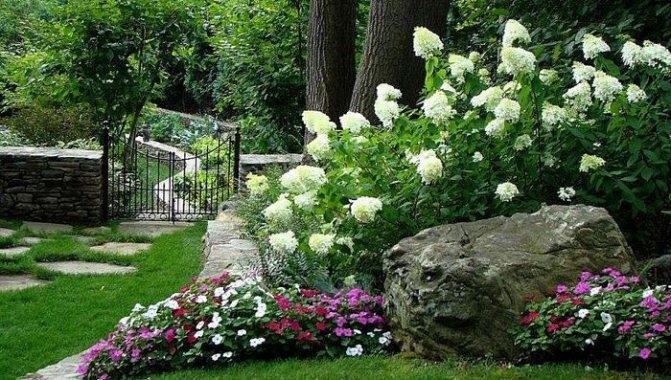

The combination with conifers and shrubs represents a bright bloom against the background of noble greenery or steel blue. Juicy graceful flowers in the "neighborhood" with thuja give the site the appearance of a Mediterranean garden. The needles prevent the development of diseases in hydrangeas and prevent the appearance of insect pests.
An oriental-style garden plot gives hydrangeas a role in flower beds. The plasticity and unpretentiousness of the culture allows you to mix it with all kinds of low shrubs and flower representatives. Evergreen azalea, deciduous rhododendron, dahlias and roses are successfully combined with hydrangea in one composition.
A mixborder of dark-leaved barberry and hydrangea, independently loose or crisp in shape, combined with sakura, represent a smooth transition from one culture to another. Hydrangea helps to bring to life many bold design solutions and ideas.
Popular varieties of hydrangea
In Japan, from where the hydrangea came to Europe, the flower is considered a gift from heaven and is still grown in temples. There the flower is called audzisai. In the territories of the western continents, the flower has several names: scientific - Hydrangea, meaning a vessel of water, and two romantic ones.
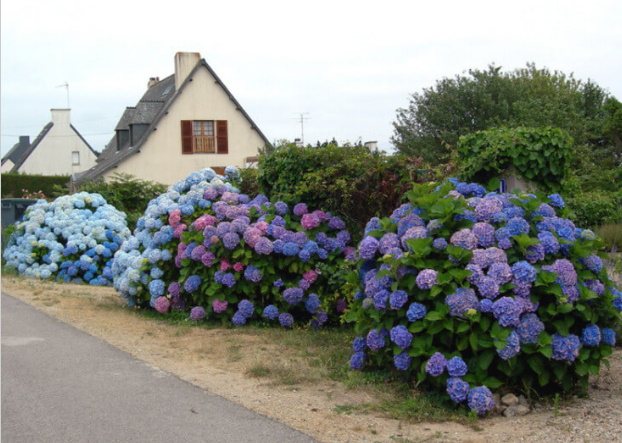

Large-leaved hydrangea bushes next to the backyard
For your information! At first, the naturalist Commerson intended to name a flowering shrub unknown to Europeans, Poivriy, found on the island of Mauritius in the Indian Ocean, in honor of his beloved. But then the opinion of the mighty of this world intervened and the flower received the name of another beauty - the princess of the Holy Roman Empire Hortense.
Under natural conditions in Asian countries, about 70 species of audzisai grow. It was there that the first western travelers-botanists drew attention to the beautiful bushes and saw what the hydrangea is combined with in the eastern garden. In the European climate, Hydrangea arborescens (treelike), Hydrangea paniculata (paniculate), Hydrangea macrophylla (large-leaved), Hydrangea petiolaris (petiolar or climbing), Hydrangea quercifolia (oakleaf) are popular.
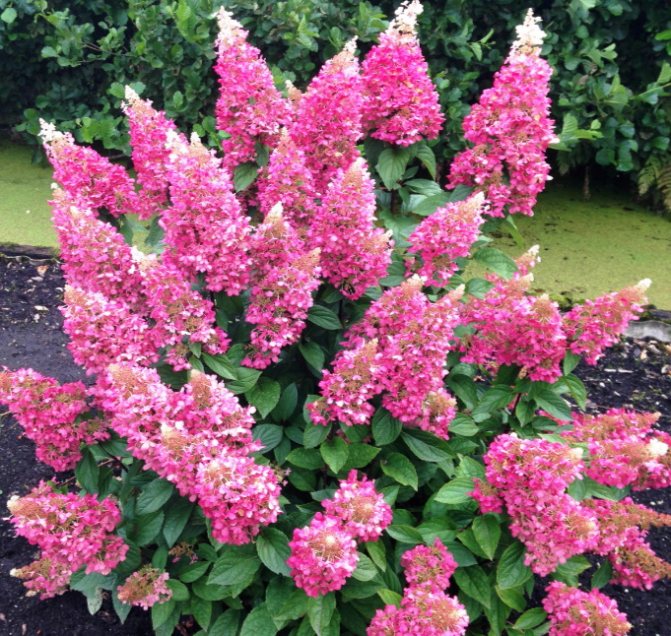

Hydrangea paniculata varieties Pinky Winky
Types and varieties
To determine the choice of a shrub, it is necessary to study all known and popular species. The plant has more than a dozen of them. The most spectacular in landscape design:
Hydrangea paniculata... The growth of an adult shrub is 200 cm. The flowering period is 4 weeks. Slightly acidic soil is preferred. The inflorescences are conical.
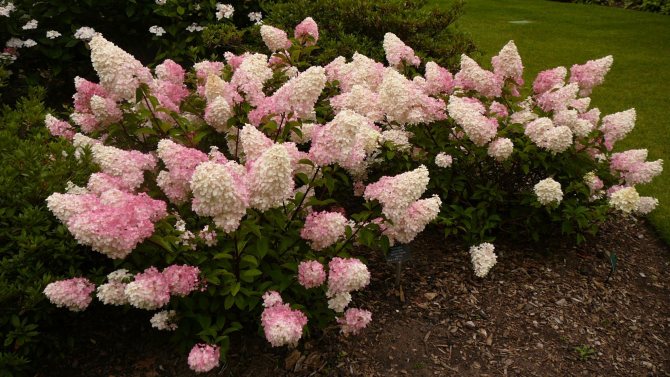

Hydrangea... The most unpretentious and frost-resistant variety. The inflorescence is spherical.An adult is 250 cm tall.
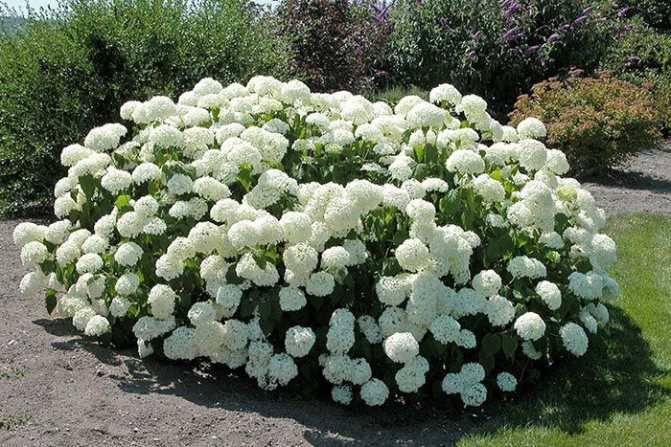

Large-leaved hydrangea... Finicky and whimsical look. Does not like frost, clay soil, direct rays of the sun. Growth reaches 250 cm.
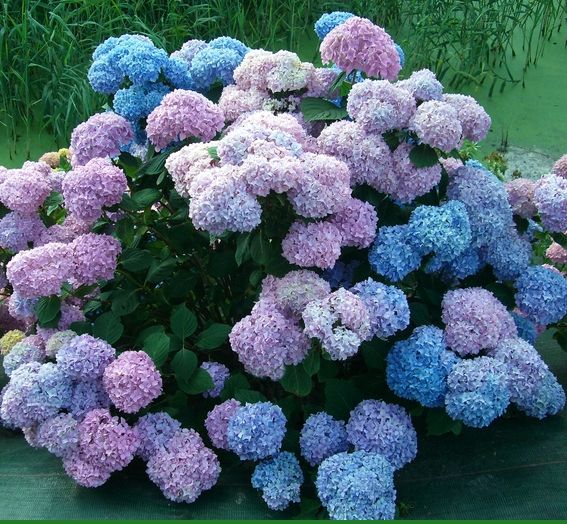

Curly hydrangea... A slowly growing liana takes on the structure of a tree over time. Popular when arranging a hedge.
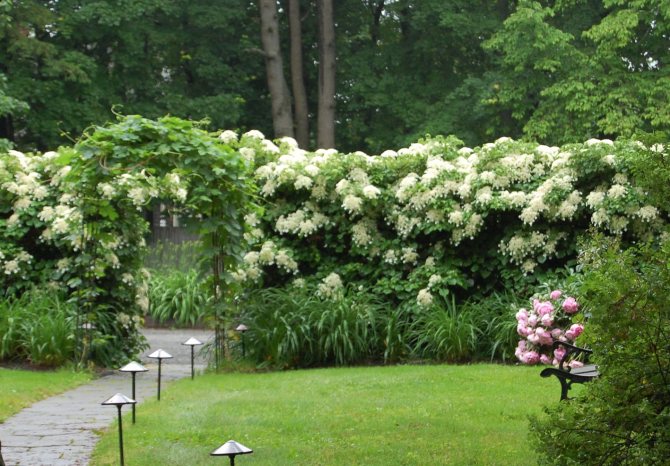

Hydrangea oakleaf... Grows in a place protected from low temperatures. The leaves are similar to oak leaves, hence the name.
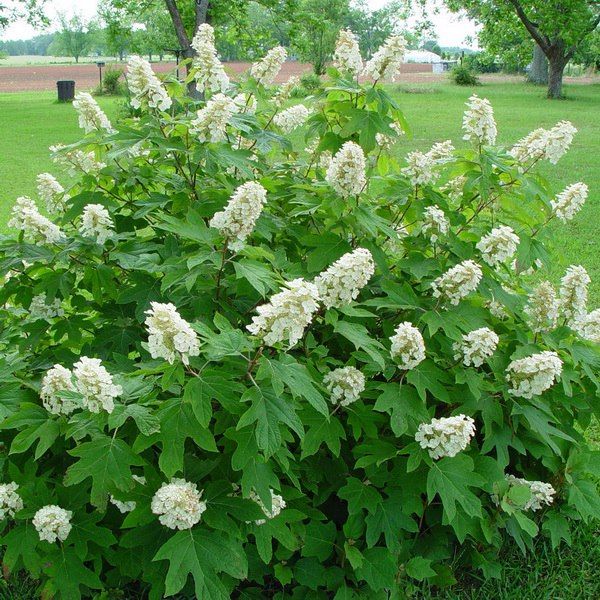

The panicle hydrangea has many varieties, here are some of them:
- vanilla freise,
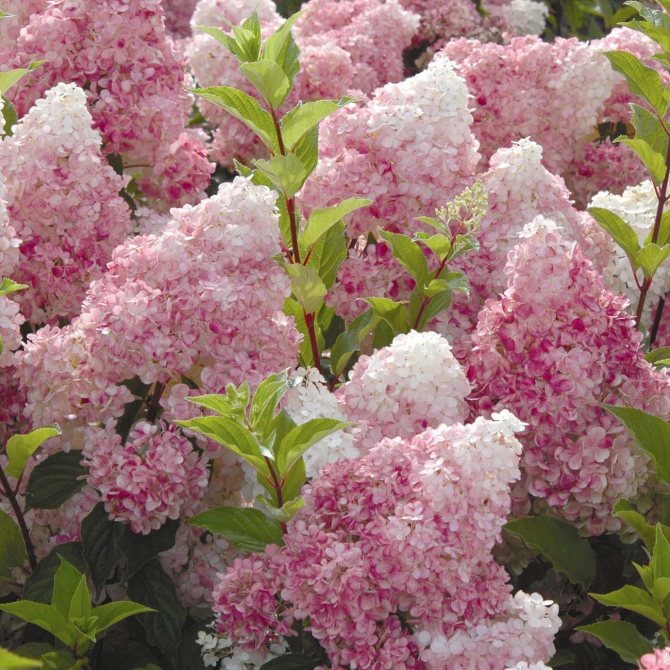

- vinky kicks,
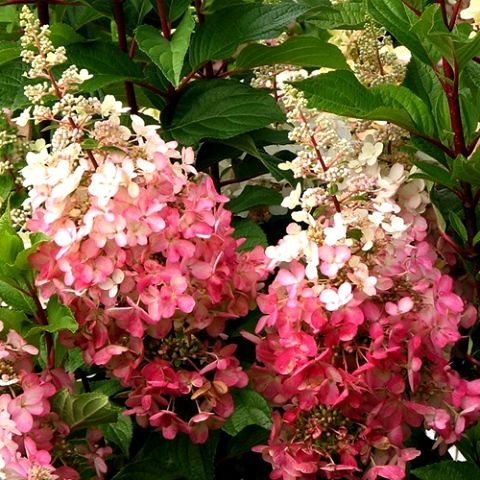

- grandiflora,
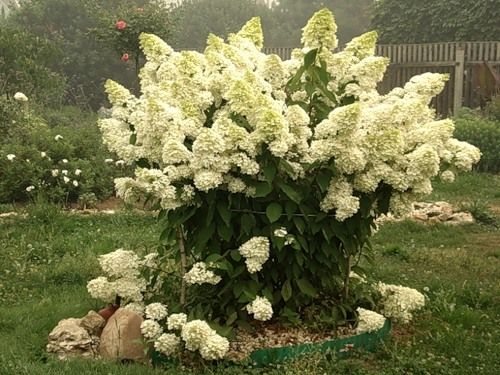

- limelight,
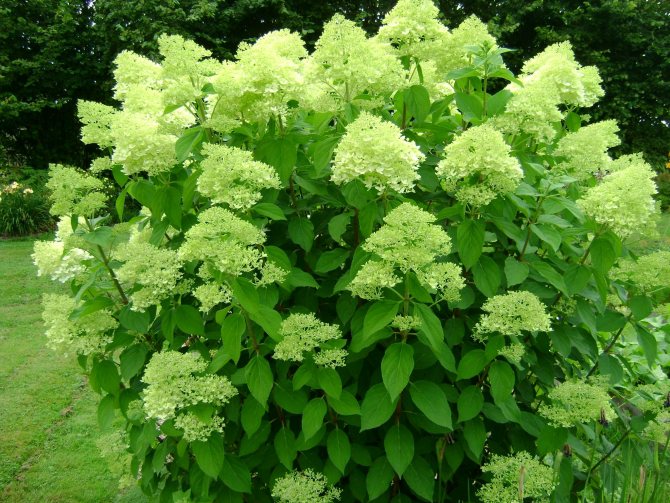

- phantom.
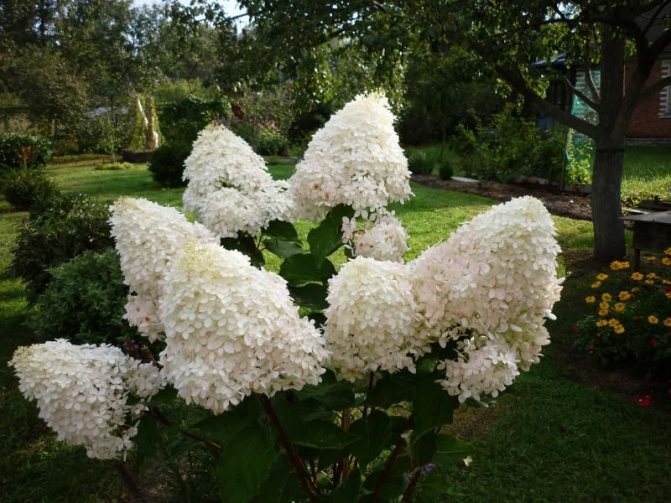

Comfortable growth conditions
All types of hydrangeas, including paniculata, are sun-loving plants that prefer to grow in an area with access to natural light, but the ability to shade at midday. Such a condition is necessary in order to preserve the decorativeness of foliage and large, colorful inflorescences from the harmful effects of sunlight.
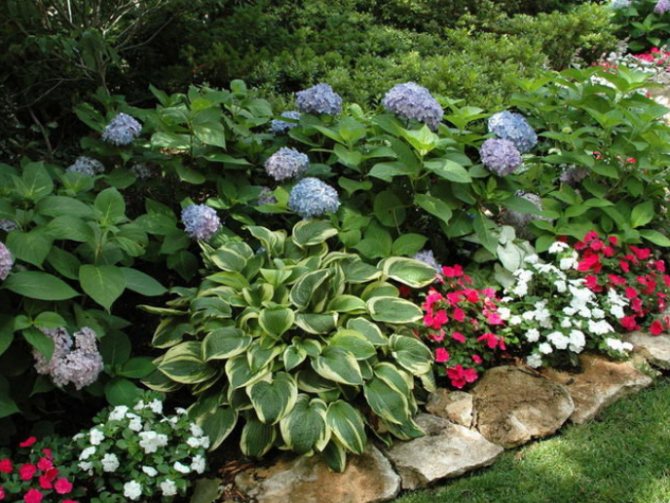

Hydrangea in the shade with hosta and balsams
When choosing a place in the garden, you should think over everything to the smallest detail.
- Hydrangea paniculata does not like stagnant moisture, so a wetland is not the best site for growing it. The optimum groundwater depth is at least 1.5 m.
- Also, a colorful shrub does not grow well on acidified soil, therefore, before planting, the soil must be deacidified - by 1 square meter. m. add 350 g of calcite, chalk, hydrated lime or dolomite flour. Then carry out a deep digging and leveling.
- It does not tolerate strong winds, from which the soil dries out quickly, and behind it the roots of hydrangea. Choose an area protected from drafts - you can plant it near the walls of the house, along the fence.
- A high decorative effect for a shrub in any composition will be provided by a fertile soil, therefore, it is advisable to sprinkle the place before planting with compost or rotted manure - 10 kg per 1 sq. m.
Planting, nursing and illness
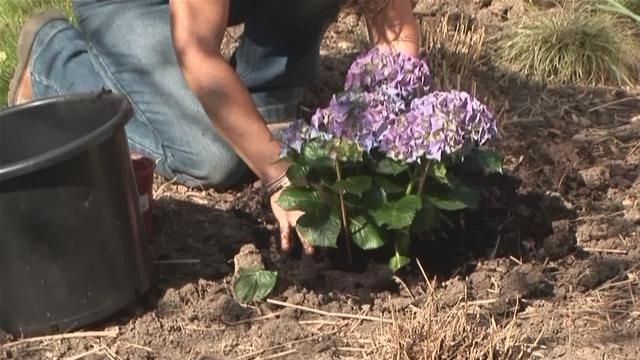

The plant needs access to the sun and protection from drafts... The ideal solution is to plant behind a building or fence. There must be a source of moisture, no more than one and a half meter distance. Only by observing all the rules for caring for the plant can you grow a strong and beautiful hydrangea bush. In cold climates, after planting, a small canopy is immediately arranged. It will shelter the plant from aggressive environmental influences (wind, frost). The size of the planting hole should be 20 cm larger than the root node. When planting, the plant is fertilized with manure, peat or compost. The soil is compacted, the bush is watered abundantly.
Abundant watering is an important part of the healthy development of hydrangeas. In early spring and throughout the dry summer, the bush is watered abundantly and often. The most suitable soil is acidified. You can create it with your own hands using ferrous sulfate or ammonium sulfate. The plant is susceptible to low temperatures. The near-stem part is covered with coniferous litter or peat. Pruning is done in early spring. Recovering from winter, it has sufficient recovery ability. Late pruning leads to weakness and disease. Necessary frequent and timely feeding with minerals.
Of course, like all shrubs, hydrangeas have a tendency to disease and susceptibility to insect pests. Fungal diseases and spider mites can cause serious troubles.
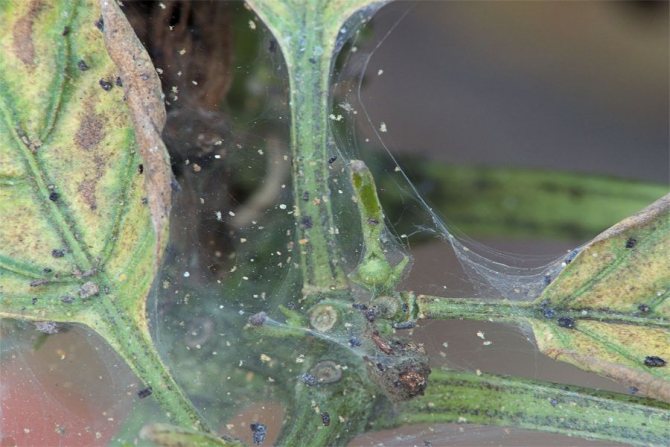

Their influence leads to leaf fall, decay of the root system and the death of the shrub is not excluded. The plant should be regularly subjected to preventive measures. The bushes are sprayed with a special solution in early spring. In the event of a disease, the plant may need a long period of treatment.

